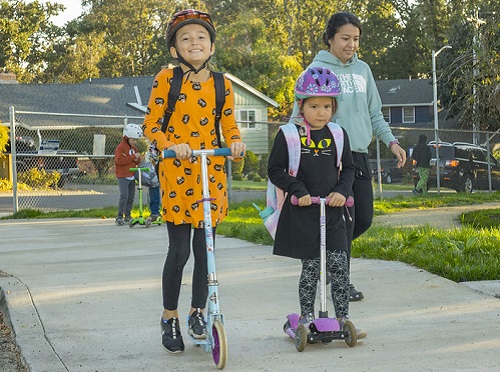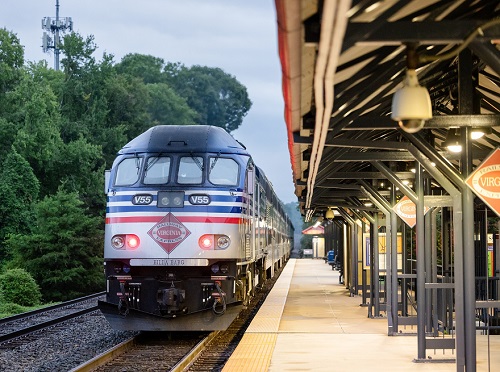FEDERAL ACTION
USDOT Unveils National V2X Deployment Plan -AASHTO Journal
America’s ‘Greenest’ Cities And What Makes Them Such –Blavity
Major New Commitment from Nearly 350 Mayors to Accelerate US Electric Vehicle Transition -Clean Technica
INFRASTRUCTURE RESILIENCE AND SUSTAINABILITY
Stuck bridges, buckling roads − extreme heat is wreaking havoc on America’s aging infrastructure -The Conversation
Boston’s Broke and Broken Transit System Hurts Downtown Recovery –CityLab
Detroit showcases green transit wins at annual conference -WDET Radio
North Carolina Explores More Sustainable Transportation Funding Options -Southern Scoop
ELECTRIC VEHICLES, INFRASTRUCTURE AND POLICIES
Understanding the Carbon Impact of Electric Vehicle Charging – Environment + Energy Leader
Get the facts before supporting electric vehicles -Tribune Democrat (opinion)
AIR QUALITY
After Nike Leaders Promised Climate Action, Their Corporate Jets Kept Flying — and Polluting –ProPublica
Will 2028 Olympics Energize L.A.’s Race to Zero Emissions? -Government Technology
California seeks Biden administration approval for controversial diesel truck ban –CalMatters
ENVIRONMENTAL JUSTICE/EQUITY
Chicago’s unique bike giveaway program is a win for mobility justice -Next City Stacker
NATURAL RESOURCES
Florida is building the world’s largest environmental restoration project –BBC
Improving salmon habitat and transportation for generations to come -WSDOT (blog)
SpaceX faces accusations it violated the Clean Water Act -The Verge
CULTURAL RESOURCES
New website lets NYers use traffic cams to turn streets into instant photo booths -New York Post
Offensive names dot the American street map − a new app provides a way to track them -The Conversation
Dodger Stadium gondola: Judge rejects lawsuit from project’s opponents -City News Service
Right on Red: The Culture War Comes for Traffic Lights -Politico Magazine (commentary)
How The Government Canceled Classic Muscle Cars -Motorious (commentary)
HEALTH AND HUMAN ENVIRONMENT/ACTIVE TRANSPORTATION
‘Yield to Your Neighbor’ Campaign Promotes Pedestrian and Bicycle Safety in Brown County, WI -WTAQ-WLUK Radio
Fairfax County’s Plan for Active Transportation -Fairfax County Government NewsCenter
Every Boston neighborhood to get a Bluebikes station, mayor says -Boston.com
The biking boom: Expanding bicycling in the National Capital Region -Metropolitan Washington Council of Governments’ Think Regionally (podcast)
Corporate denial of aircraft noise pollution -Quiet Communities (opinion)
TRB RESOURCES/RESEARCH/ANNOUNCEMENTS
TRB’s Transportation Symposium on Environment, Energy, and Livable Economies –TRB
Constructing Valid Geospatial Tools for Environmental Justice –TRB
Carbon Utilization Infrastructure, Markets, and Research and Development: A Final Report –TRB
Transporting Freight in Emergencies: A Guide on Special Permits and Weight Requirements –NCHRP
New CEQ Regulations Effects on Transportation Industry -TRB (webinar)
FEDERAL REGISTER NOTICES
Proposed Memorandum of Understanding (MOU) Assigning Certain Federal Environmental Responsibilities to the State of Maine, Including National Environmental Policy Act (NEPA) Authority for Certain Categorical Exclusions (CEs) -FHWA (Notice; request for comments)
Public Land Order No. 7948; Extension of Public Land Order No. 7613; Withdrawal of Public Lands for a Runway Safe Zone, Nevada -Bureau of Land Management (Notice)
Air Plan Approval; Delaware; Motor Vehicle Inspection and Maintenance Program -EPA (Proposed rule)
2025 Clean Air Excellence Awards Program -EPA (Request for Nominations, Correction)
Notice of Public Meeting of Scientific Earthquake Studies Advisory Committee -U.S. Geological Survey (Notice of teleconference Meeting)
Notice of Availability of a Final Environmental Assessment for Commercial Wind Lease Issuance on the Pacific Outer Continental Shelf, Oregon -Bureau of Ocean Energy Management (Notice of availability)
Request for Information Regarding Interregional and Offshore Wind Transmission -Grid Deployment Office, U.S. Department of Energy (Request for information)


